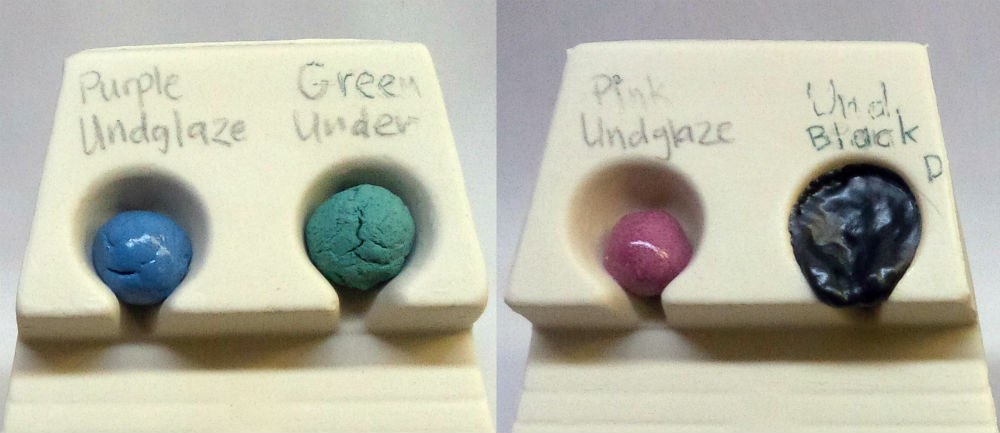Here is motivation to make your own underglazes!
Commercial hobby insight-live.com/glossary/92">underglazes are high in stain and very expensive. But does expensive mean suitable? To help answer we have over-fired these commercial products in a melt fluidity tester (to cone 8). They are recommended for use from cone 06-6 (some can go higher e.g. the green). Underglazes need to melt enough to bond with the underlying body, but not so much that opacity is lost (any melting loses opacity). Excessive melt can also cause design edges to bleed. To work well at greater thicknesses, underglazes need to have a firing shrinkage similar to the body (an ill-fitted underglaze and body forced into marriage are eventually going to divorce, in the form of flaking or cracking at their interface). Thus, while a regular glaze would melt enough to go well down the runway on this tester, an underglaze should not flow at all. At this temperature, none of these have achieved the right degree of maturity (the green is too refractory, the others over-melt to varying degrees). The only one that has a chance of suitability at cone 6, two cones lower than this, is the blue. Clearly, the base recipe and stain percentage in each underglaze recipe color needs attention, if that can be achieved all of these would mature to the same degree.
Pages that reference this post in the Digitalfire Reference Library:
Is your underglaze forming a bond with the body?, When a DIY black underglaze makes sense, Here is why you don't want an engobe to melt, Underglaze, Silk screen printing, Reverse Engineering an Underglaze, Bleeding Colors

This post is one of thousands found in the Digitalfire Reference Database. Most are part of a timeline maintained by Tony Hansen. You can search that timeline on the home page of digitalfire.com.
